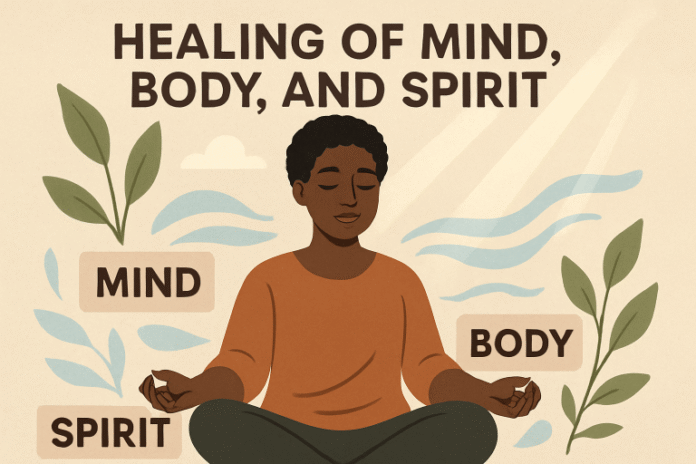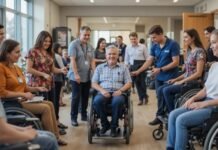Table of Contents
Key Takeaways
- Holistic therapies integrate mind, body, and spirit to promote comprehensive healing from trauma.
- Practices such as mindfulness, somatic therapies, and creative expression can effectively aid in trauma recovery.
- Incorporating physical health routines and creating safe environments are essential components of the healing process.
Trauma is a complex and deeply personal experience that can leave lasting effects on one’s physical, mental, and emotional health. Addressing these impacts calls for an approach that goes beyond traditional therapy, engaging the whole person—mind, body, and spirit. Integrating holistic methods opens up more information for individuals looking for comprehensive healing strategies. These methods empower survivors to reclaim control, restore balance, and nurture well-being at every level.
By tuning in to one’s unique needs—whether through mindfulness, somatic therapies, creative expression, or lifestyle shifts—healing becomes an integrative journey. Each step gently supports the individual, forging pathways toward lasting resilience and inner peace.
Understanding Holistic Approaches to Trauma
Holistic healing acknowledges the inseparable relationship between one’s mental, emotional, physical, and spiritual health. Rather than isolating one symptom or aspect, holistic approaches strive to nurture the entire person. The goal is to facilitate healing and restoration at every level, supporting a sense of balance and wholeness often disrupted by trauma.
By engaging multiple facets of well-being, holistic care respects individuality, gently helping survivors rebuild trust in themselves and the world around them. For professionals and survivors alike, a broad perspective can help personalize healing pathways and honor the complex nature of recovery.
Mindfulness and Meditation
Mindfulness and meditation have become foundational practices for trauma survivors seeking clarity and inner peace. These practices encourage a gentle, non-judgmental awareness of the present moment, reducing reactivity and anxiety that can arise from difficult emotions or memories.
Through meditative practices like breathing exercises, guided imagery, or body scans, individuals can learn to self-soothe and enhance emotional regulation. Consistent mindfulness routines can foster a sense of stability, helping survivors navigate triggering experiences with more acceptance and less overwhelm. The integration of mindfulness into daily life is increasingly supported by research for its effectiveness in trauma recovery [source].
Somatic Therapies
Traditional talk therapy may not reach the physical imprints of trauma, which makes somatic therapies an essential piece of holistic healing. Approaches such as somatic experiencing and sensorimotor psychotherapy focus on reconnecting with bodily sensations, movements, and stored tension, allowing the body to release “stuck” trauma energy.
These practices help foster a sense of safety in the body, often a significant barrier for trauma survivors. Deep breathing, gentle touch, and grounding techniques can gradually shift the body’s response to stress, supporting deeper healing. The process is unique to each person and relies on tuning in to subtle cues, validating that healing is both physical and emotional.
Creative Expression
The arts provide an alternative and powerful way for survivors to process and express what may be difficult to articulate in words. Art therapy, music, dance, and journaling can all serve as safe outlets for complex feelings.
Creative activities encourage emotional exploration and self-understanding without judgment or expectation. They can help reduce isolation, build confidence, and even foster joy and connection with others. For some, the act of creating is as healing as sharing—with studies indicating that regular participation in the arts is associated with lower levels of psychological distress.
Physical Health and Routine
Meeting basic physical needs is an often underestimated but vital aspect of holistic healing. Regular exercise, proper nutrition, and quality sleep can provide structure, stability, and resilience during the recovery process.
Movement-based practices like yoga and tai chi further complement trauma recovery by integrating mindful motion, breath, and relaxation. These routines can reduce symptoms of anxiety and depression and improve physiological balance. As survivors regain confidence in their bodies, they often discover a renewed sense of agency and belonging.
Creating Safe Environments
Physical and emotional safety is essential for healing from trauma. Establishing healthy boundaries, both in relationships and within one’s personal spaces, builds trust and a sense of control. Creating environments that evoke calm—through comforting objects, soothing colors, or quiet spaces—can reinforce feelings of security.
Support networks, therapeutic communities, or online groups can also foster a sense of belonging and validation. In a trusted environment, survivors can gently explore their challenges and move forward at their own pace.
Patience in the Healing Journey
The path to recovery from trauma is rarely a straight line. It requires compassion, grace, and patience for oneself. Progress can be slow and setbacks are part of the process—not a failure, but a natural element of growth.
Marking small victories, practicing self-kindness, and remembering that healing is an ongoing journey can help sustain hope. For many, support from mental health professionals, peer groups, and holistic practitioners can bolster resilience and nurture empowerment along the way.
Holistic trauma recovery is a deeply personal journey that invites individuals to care for every part of themselves. By weaving together a variety of healing practices, survivors can discover greater balance, connection, and fulfillment as they reclaim their lives.
Want to know about “Here’s How You Can Protect Your Legal Rights After a Traumatic Brain Injury” Check out our “Lifestyle” category.


























